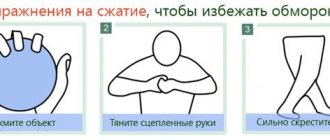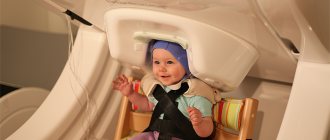Description of the pathology
The symptoms of the disease depend on the location of the damage to the nerve fibers. Almost always, patients note blurred vision, problems with speech and coordination. The first signs of pathology are:
- fast fatiguability;
- double vision;
- blurred vision;
- gait disturbances;
- deterioration of temperature and tactile sensitivity.
These symptoms disappear after some time and a period of remission begins. In this regard, patients in most cases do not suspect the progression of multiple sclerosis.
Treatment of pathology is carried out with medications that suppress the activity of immune cells. The patient's condition improves with the help of physical therapy aimed at strengthening muscles and maintaining balance through precise exercises.
Treatment of multiple sclerosis
There is currently no cure for multiple sclerosis, but there is treatment that can slow the progression of the disease, reduce the number and severity of relapses, and alleviate symptoms. Some people also use complementary and alternative therapies, but research does not support their particular benefit.
Several treatments for the disease are approved in Russia for relapsing forms of multiple sclerosis. Most drugs work by changing the way the immune system functions. Interferon-based injectables are most often used. Current protocols recommend using these drugs early because there is a good chance they can slow the progression of MS, especially if a person takes them when symptoms are not too severe.
Your doctor should constantly monitor how well a particular medication is working because side effects may occur and certain medications are not suitable for everyone. New drugs entering the market are safer and more effective than previously used ones. Side effects of immunosuppressive drugs include an increased risk of developing infectious diseases. Some medications may also harm the liver. If a patient notices side effects or symptoms get worse, they should contact their doctor to make adjustments to their treatment regimen.
Short-term medications are used to relieve symptoms during an exacerbation of the disease. Corticosteroids are used for such purposes: they reduce inflammation and suppress the activity of the immune system. Steroids exhibit side effects with frequent use, and they are unlikely to provide any long-term benefit.
The patient is often advised to make lifestyle changes. If vision problems arise, your doctor may recommend resting more often or limiting the time you view information on electronic media. A person with multiple sclerosis must learn to feel their body and stop working as soon as fatigue sets in.
Editor's note: Recommended diet for concussions
If problems with mobility and balance occur, physical therapy and walking devices such as a cane may help. For tremors, a person may use assistive devices or attach weights to their limbs to reduce shaking. Some medications also help reduce or eliminate tremors.
To prevent physical fatigue, it is necessary to organize and strictly observe a work and rest schedule. Physical and occupational therapy teaches patients how to perform certain activities more comfortably and quickly. Assistive devices such as a mobility scooter help save energy. Psychological consultations help a person improve stamina and gain high energy potential by improving the quality of sleep and performing relaxation exercises.
Your doctor may prescribe anticonvulsant or antispasmodic medications to relieve trigeminal neuralgia, a severe pain that affects the face. Pain relievers can help with body pain. There are also medications to relieve muscle pain and spasms in multiple sclerosis. Certain medications and dietary changes can help relieve bladder and bowel problems.
When depression develops, psychotherapeutic work is required. In severe cases, your doctor may prescribe a selective serotonin reuptake inhibitor. To prevent changes in the cognitive sphere, it is necessary to regularly perform exercises to improve memory, attention, and thinking.
Alternative methods help cope with other aspects of multiple sclerosis:
- heat and massage to treat pain;
- acupuncture to improve gait;
- stress management techniques to improve your mood;
- exercises to maintain strength and flexibility, reduce muscle tension;
- a healthy diet with plenty of fresh fruits, vegetables and fiber;
- stopping smoking.
Basic rules for physical therapy exercises
Physical training is carried out three times a day, their duration should not exceed 15-20 minutes. The complex is selected taking into account the symptoms. The main recommendations in cases where physical therapy is allowed for multiple sclerosis are as follows:
- Periods of activity should alternate with relaxation.
- During gymnastic training, the load and intensity are increased gradually.
- Even if you are slightly tired, stop the activity.
- During training, all muscle groups are used.
- Breathing should remain even and calm. Any action is performed while inhaling and returning to the starting position while exhaling.
- Painful sensations during exercise signal that further exercise is inadmissible.
It is better to start exercise therapy for multiple sclerosis under the supervision of a physiotherapist. After eliminating unacceptable exercises that cause discomfort, you are allowed to move on to independent exercise. The complex necessarily includes movements for coordination and balance.
Symptoms
Since this disease is a disease of the central nervous system, which controls all functions of the body, symptoms can appear in any organs and systems. The most common symptoms of multiple sclerosis are listed below.
- Muscle weakness. People develop muscle weakness due to underuse of the muscle or failure of signals to travel along the damaged nerve.
- Numbness and tingling. A feeling like pins and needles is one of the earliest symptoms of multiple sclerosis. Tingling can occur in any area: face, torso, arms or legs.
- Lhermitte's sign. A person may experience a sensation of electric shock when they move their neck. This pain is known as Lhermitte's sign.
- Bladder problems. The person may have difficulty emptying their bladder or need to urinate frequently or suddenly. Loss of bladder control is an early sign of multiple sclerosis.
- Intestinal problems. There is an imperative urge, increased frequency, and retention of stool.
- Fatigue. Asthenic status can undermine a person's ability to function normally at work or at home. Fatigue is one of the most common symptoms of multiple sclerosis.
- Dizziness and balance problems are common problems for patients. A characteristic symptom of multiple sclerosis is difficulty coordinating movements.
- Sexual dysfunction. Both men and women may lose interest in sex.
- Spasticity and muscle spasms are an early sign of multiple sclerosis. Damaged nerve fibers can cause painful muscle spasms, especially in the legs.
- Tremor. Some people experience involuntary and uncontrollable shaking movements.
- Vision problems. Some people may experience double or blurry vision, partial or complete loss of vision, or red-green color distortion. Inflammation of the optic nerve can lead to pain when moving the eye. Vision problems are an early sign of multiple sclerosis.
- Changes in gait and mobility. Multiple sclerosis can change the way people walk due to muscle weakness and problems with balance, dizziness and
- Emotional changes and depression. Demyelination and damage to nerve fibers in the brain can cause emotional changes, often manifesting as depressed mood.
- Problems with learning and memory. Changes in the brain can make it difficult to concentrate, plan, study, prioritize, and multitask.
- Pain is a common symptom of the disease. Neuropathic pain is directly related to multiple sclerosis. Other types of pain occur due to muscle weakness or stiffness.
From the editor: Causes, diagnosis and treatment of cervical migraine
Multiple sclerosis affects people differently. For some, it starts with minor problems and their symptoms do not progress for years. For others, the condition worsens rapidly over weeks or months. Some people will have only mild impairment, while others will experience significant changes that are disabling. However, most sufferers describe moments when symptoms worsen, followed by periods of relative well-being.
Exercises while standing
When performing this complex, the legs are shoulder-width apart. It is recommended to perform the exercises 4-8 times. With multiple sclerosis, tilt the head forward, backward and to the sides, then move on to bending and turning the torso. After this, the task is complicated, and while bending forward, the patient must reach the floor with his hands, and then return to the starting position.
The next movement is spreading your arms to the sides while inhaling and lowering your arms as you exhale.
Useful for this disease:
- lunges forward on each leg in turn;
- squats with body weight transferred to the side, leaning on a bent leg;
- lunges to the sides.
Therapeutic exercises for multiple sclerosis include movements while standing on one knee. The other knee and opposite arm should not be in contact with the floor. This exercise improves balance. Multiple sclerosis is a disease that requires daily physical effort; if you train hard, you can lead a normal life; after some time after starting training, you can even engage in regular sports, and not just therapeutic exercises.
Exercise therapy exercises from a standing position
Exercises from a standing position begin with the traditional position, when the arms are positioned randomly and the legs are shoulder-width apart:
- Breathing exercise: raising your arms to the sides with a deep breath, then exhaling slowly - return your arms to the starting position, do the exercise 4 times. It is necessary to monitor the coordination of movements, in case of dizziness, reduce the number of repetitions, take a break and rest.
- Head tilts: you need to smoothly tilt your head to your shoulders, chest and back, repeat this manipulation in each direction 4 times, then lightly shake your head to relax the muscles.
- Perform measured tilts of the body forward, backward, right and left 4 times in each direction, fixing the pelvis motionless; over time, add tilts with your hand.
- Lunges forward and in different directions. The starting position is traditional, hands at random, fixing the knee, lunge with your right leg, then with your left leg forward, bending the knee, lifting the foot off the floor, then lunge to the sides, slightly tilting the body forward. Repeat 4 times in each direction, individually adjusting the degree of load to prevent overwork.
- Alternately changing the center of gravity: crouching deeply, alternately smoothly pump on your legs, fixing the position for a few seconds, perform 3 rolls on each leg, slowly get out of the position.
- Twisting, the main position is standing, arms bent at the elbows and spread to the sides, the pelvis is fixed in a stable position, perform smooth body turns to the left and right, bringing your arms together. Make 4 turns of the body in each direction.
- Alternate leg swings, stand sideways near a support (wall, chair, wall bars), holding on with your hand, perform leg swings in different directions, do not arch your back at the waist and chest, keeping the opposite hand on your belt, repeat the exercise 4 times in each direction .
- Alternately raise the leg bent at the knee to the chest, hands clasp the knee, fixing it. Do such lifts 5 times on the right and left leg, increasing the number of repetitions over time.
- Squats with your head tilted to the right and left, do not arch your back in the lower back, keep your hands in front, on your belt.
From the editor: Types of course of the disease schizophrenia
Exercises from the starting position lying down:
- Lie on your back, rest your feet on the floor, bend your knees, slowly lift your pelvis, fixing the position in three counts, lower yourself onto your back, relaxing your muscles. Perform 5 pelvic lifts.
- From a lying position, raise your legs perpendicular to the floor, arms arbitrarily along the body, lower back touching the floor, straighten your legs one by one without touching the floor, do this 5 times.
- Simulation of cycling while lying on your back. Bend your knees, pull your feet towards you, perform movements that imitate the position of your legs when riding a bicycle, do the exercise for 2 minutes.
- Lying on the floor, straighten your legs, take a gymnastic stick or towel, stretch your arms above your head, lift your straightened arms above your head and stomach, bringing them back above your head. Repeat 5 times.
- Lie on the floor, bend your knees. Bend your legs to the sides without lifting your pelvis from the floor, repeat 4 times to the right and left.
Exercises from a sitting position (for patients with limited physical activity):
- sitting on a chair, alternately rock your pelvis, leave your shoulders motionless, do it 6 times;
- smooth squatting on a chair: holding your hands on your knees, sit down and, without pausing, stand up, repeat 6 times;
- take a gymnastic stick or other object while sitting on a chair, straighten your arms, move the stick without bending your elbows, perform 5 times;
- bending the wrists: sit at the table, put your hands on it, palms down, clench into fists and lift, without lifting your hands from the table, to the maximum possible limit, then completely relax, shake your hands, perform the exercise 5 times for each hand;
- lateral sliding on a surface: sitting on a bench or bed, perform alternate sliding and tilting the body to the sides - 6 times each;
- sitting on a chair with a backrest, bend your lower back, simulating complete relaxation, touching the back of the chair, then sit up straight, repeat the exercise 6 times.
You should select exercises with a physiotherapist, giving preference to the most effective ones. You need to perform physical activity carefully, distributing it evenly throughout the day, for 15 minutes in 3 approaches.
After some time, add more complex exercises. For variety, introduce a set of yoga and swimming.
Periodically consult with your doctor or therapist.
Exercises while lying on your back
It is recommended to perform the complex on a hard surface. The permissible number of repetitions for multiple sclerosis is 5 times.
In a lying position, your arms can be in several positions. If they are under your head, perform the “bicycle” exercise. It is important that the movement is performed with each leg in turn.
Effective training in a lying position for MS (multiple sclerosis) are:
- Bend your knees to the sides. It is important that the shoulders and pelvis do not come off the floor.
- Lifting the pelvis with bent knees.
- Raises of outstretched arms. This task can be performed using a gymnastic stick.
- Bend your legs and alternately pull your knee to your chest.
- Abduction of the arm and opposite leg to the sides. It is very important at the time of execution to control that your arms and legs move on the floor.
To perform a more complex exercise for multiple sclerosis, a round object is required. Taking it in the right hand, by moving it along the floor, the object above the head is transferred to the other hand. After this, bend the right leg and transfer the object over the knee from the left hand to the right. The exercise is repeated 4 times, after which it is performed in the opposite direction.
If the previous version of the exercise causes difficulties for the patient, it is recommended to perform the “book” exercise. To do this, one hand is lifted off the floor, after which its palm is placed on top of the other hand. The benefit to the body is the stimulation of blood circulation due to twisting of the spine.
Gymnastics for multiple sclerosis[edit | edit code]
Optimal types of load[edit | edit code]
- yoga
- qigong
- tai chi
- a ride on the bicycle
- walking
- aerobics without jumping or sudden movements
- dancing
- climbing stairs
- water aerobics
- strength exercises using expanders
- Pilates
- exercises to strengthen the muscles of the perineum
- Feldenkrais Method classes
Multiple sclerosis
is a chronic, unpredictable neurological disease that affects the central nervous system. Damaged myelin, the fatty substance that surrounds and protects the nerve fibers of the central nervous system, forms scars (sclerotic plaques) that distort nerve impulses traveling to and from the spinal cord and brain. This distortion manifests itself in a spectrum of symptoms, from mild, such as numbness of the limbs, to severe, such as paralysis or loss of vision. The course of the disease, severity and specificity of symptoms vary significantly between patients.
Moderate-intensity resistance training can help improve muscle weakness. If the patient has cramps, training with resistance bands (resistance bands) is easier than lifting free weights.
In the past, people with multiple sclerosis were advised to avoid exercise entirely because it was thought to worsen the condition. However, recently a lot of evidence has appeared in favor of the fact that exercise not only does not have a harmful effect, but, on the contrary, improves the quality of life of such patients and can alleviate the manifestations of the disease.
Exercise can help you lose weight, which is a side effect of many medications used to treat multiple sclerosis, and minimize cardiovascular complications.
Why train[edit | edit code]
Multiple sclerosis manifests itself differently in different people, so different exercises will suit them. Consult a physiotherapist who can help you create a suitable and comfortable program.
Exercise can improve a range of symptoms and complications of this disease, including fatigue, muscle tension, weight gain, brittle bones, difficulty moving, depression, anxiety, and difficulty controlling your bladder. Yoga and cycling help fight fatigue, and strength training increases bone density. A study conducted at the University of Tennessee found that by performing a 45-minute tai chi routine in a seated position twice a week, patients were able to improve their motor performance, coordination and endurance. In addition, it was a pleasant opportunity for them to communicate with each other.
Physical activity helps reduce heart and vascular problems and control weight, which is especially important since weight gain is a side effect of many medications used to treat multiple sclerosis. If your condition worsens and you are unable to continue with any of the exercises, see a physiotherapist who can suggest new ways to stay active and recommend exercises that are appropriate for you.
How often?[edit | edit code]
- If possible, at least 20 minutes of aerobic, strength training and weight-bearing exercise 2-3 times a week.
- Do yoga or tai chi one or more times a week. Typically these sessions last 45-60 minutes. If it is more convenient for you, these complexes can be performed while sitting.
- Warm up (5 minutes): Stretch and warm up your muscles by making wide circular movements with your hands, feet, arms and legs.
- Even a slight or moderate load will be useful. Take your time and listen to yourself.
- If you feel pain or fatigue during exercise, stop exercising, rest, and consult a physician. If your health status has changed, you may need to reconsider your exercise program.
Exercise can improve a range of symptoms and complications of multiple sclerosis, including fatigue, muscle tension, weight gain, brittle bones, difficulty moving, depression, anxiety, and difficulty controlling your bladder.
Types of physical activity for patients with multiple sclerosis[edit | edit code]
Try to find activities specifically for those with limited mobility. If there is no such group nearby, perhaps an instructor at a regular fitness center will be able to work with you, making adjustments to his program. Before starting the class, discuss your needs with him so that the instructor offers simplified versions of exercises that are too difficult for you.
- Yoga.
Increases flexibility, improves coordination, helps to relax. Yoga exercises are easy to change and adapt to the capabilities of a particular person. Yoga improves posture and body alignment, which relieves unnecessary tension from muscles and bones. If you state your limitations in advance, a good instructor will suggest asana options that are accessible to you. Most types of yoga, if not overdone, are beneficial for people suffering from multiple sclerosis. The exception is active strength, Ashtanga and Bikram yoga, which can worsen their condition due to the so-called “hot bath syndrome”.
- Tai chi
. Many people with multiple sclerosis practice tai chi and find it easier to maintain balance and relax. This ancient Taoist practice also helps normalize blood pressure and heart condition. As in yoga, the movements here are easily adapted to the state of a particular person. The class consists of a series of slow, controlled movements that tone the muscles and improve flexibility. You can also exercise in a stroller.
- Feldenkrais method
. This gentle technique consists of a series of movements that, according to its fans, with a small amplitude, improve posture, flexibility, balance, coordination, breathing and simplify the performance of daily tasks - that is, they help correct everything that suffers from multiple sclerosis. Some patients find that this technique helps them, while others do not notice a change in their ability to perform certain activities. However, they all agree that these activities help reduce stress and reduce anxiety.
- Exercises in the water
. Water aerobics and other fitness programs performed in water are a beneficial and effective form of physical activity for patients with multiple sclerosis. Muscle strengthening, stretching and aerobic exercise take place in one lesson and in the pool. The body is lighter in water, which relieves stress on the joints and expands motor capabilities. Patients with increased sensitivity to temperature may prefer exercise in cold water, while others may be better suited to a warm water pool.
- Weight maintenance exercises
. Weakened bones and osteoporosis can pose a real threat to people with multiple sclerosis who don't get enough exercise or take steroids for a long time. Moderate activity strengthens bones and can prevent complications. Even when moving in a stroller, you can do small amounts of exercise, such as standing for a few minutes at regular intervals throughout the day. You may need support to maintain your balance.
- Strengthening exercises
. This primarily involves lifting and moving light dumbbells or other objects, but you can also use your own body weight to strengthen muscles and bones. If you have tremors or spasms, using a resistance band may be easier than using free weights.
How to deal with “hot bath syndrome”[edit | edit code]
Some patients with multiple sclerosis are sensitive to fever. If you are one of them, take a cool shower before and after class, and drink cold drinks during it. You may want to split your workout into chunks and take breaks to rest and cool down. If you choose to train in water, find a pool where the water temperature is below 29°C.
If you are sensitive to temperature, exercise in cool water.
Balance and vision disorders[edit | edit code]
If these disorders make it difficult to exercise outdoors or in the gym, try exercising at home with someone's help - on a rowing machine or an exercise bike. If your arms are stronger than your legs, you can get aerobic exercise by riding a handbike, a device on which the pedals are powered by your hands. Use the verticalizer as a support when performing weight-bearing exercises. Weights attached to your wrists or ankles will help strengthen your arms and legs. Walking sticks or trekking poles will help you maintain your balance if you and your companion decide to go for a walk.
Training in a sitting position
The simplest exercise in this category is smoothly sitting down on a chair. The task is made more difficult when placing your hands on your knees. You should rest your hands on them on the chair when standing up.
Raising your arms while sitting is allowed. Doctors recommend bending to the sides, forward and backward. In this case, your hands should slide along the surface. During training, you should keep your gaze straight; tilting your head back is prohibited.
There is a benefit for patients with a similar pathology if, when performing the complex in a sitting position, you take a stick and slide your hands along it towards its center. An important condition for a positive result of therapy is to keep your arms outstretched.
Use of simulators
In case of multiple sclerosis, training performed on the Swedish wall shows good results. It can serve as a support when performing exercises from a standing position. In addition, the Swedish wall facilitates squats and backbends. Multiple sclerosis may not go away completely, but its symptoms can be minimized if you exercise daily.
Recommended physical exercises:
- Having placed a chair in front of the wall bars and holding the crossbar with your hand, you need to sit down without lifting your hands.
- Place your right foot on the bottom step, after which you take a step down with the same foot.
With the help of physical training, the life of a patient with multiple sclerosis is made easier. You should consult your doctor regarding the appropriate exercise and nutrition plan. To speed up treatment, you should combine therapeutic exercises with exercise equipment, swimming, and walking. You need to move your legs more actively; you can leisurely ride a tricycle or a velomobile. Multiple sclerosis will stop progressing if you lead an active lifestyle and eat right.
How to normalize muscle tone
Risk factors One of the complicating manifestations of multiple sclerosis is muscle spasms. Medicines recommended by a doctor or a specialist at a consultation center will help relieve and reduce them. However, it is useful to know what factors contribute to an increase or decrease in muscle spasms.
First of all, muscle spasms (spasticity) are maximized by psychoemotional overload, physical activity on the “interested” muscle groups, as well as smoking and drinking large quantities of coffee.
Prevention measures Good ways to reduce spasticity are yoga, auto-training, and swimming. A warm sitz bath can provide a quick effect to reduce the tone of the muscles of the lower extremities. Various swing exercises also help reduce tone. The most effective results can be achieved through regular swimming, but without excessive physical exertion. A twofold effect is manifested here: being in water, firstly, promotes relaxation, and secondly, has a moderate cold effect.
Regular exercise without significant physical activity not only helps normalize muscle tone, but also improves overall well-being. However, only those activities that are performed with pleasure and correspond to the individual’s individual capabilities will bring benefits. In addition to the selected set of physical exercises, experts recommend cycling or boating. The main thing is to beware of overwork, which can cause an exacerbation of the disease. Remember that the emphasis on treatment should be during remissions to prevent exacerbations.









